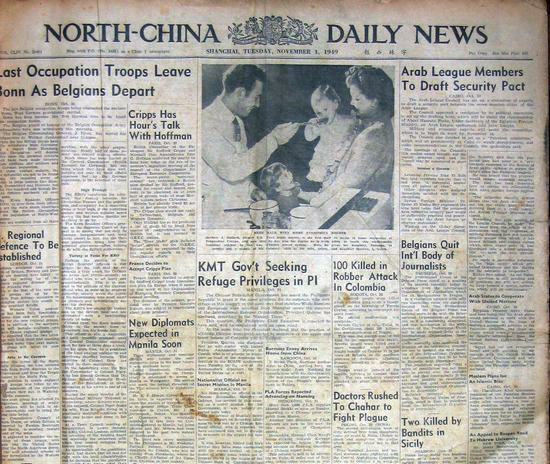China's 1st English-language newspaper readable via computer

After four years of efforts, Shanghai Library has finished digitizing 100 years of print editions of China’s first English-language newspaper.Photo: CCTV
After four years of efforts, Shanghai Library has finished digitizing 100 years of print editions of China’s first English-language newspaper. More than 500,000 pages of the North-China Herald, which later became the North China Daily News, can now be viewed on library computers.
A British auctioneer published the first edition of the North-China Herald in August 1850. It began as a weekly paper, but began publishing daily 14 years later, when it changed its name to the North-China Daily News. While its circulation peaked at just under 8,000 copies a day, it was called the most influential foreign newspaper in China at the time. Visitors can now read every issue the newspaper published until it closed down in 1951, on computers inside the city’s main library and the Bibliotheca Zi-Ka-Wei in Xujiahui. The library says a number of media researchers and historians have started looking through the digital files.
Lu Jian, Shanghai Library, said, "It was like saving the dying. We used A1-size scanners for the digitization. Meanwhile, we’re also digitizing the Shanghai Evening Post and Mercury, which was established by an US expat in Shanghai in 1929. "
Song Wenjing, Shanghai, said, "This is a paper copy of the North China Daily News. The Shanghai Library says the originals are too fragile for readers to browse. That’s why the library decided to digitize the newspaper in order to protect it. The library says it’s not the first organization to do that, but it has the most complete collection in China. "
The newspaper attached importance to news coverage and reviews of current and diplomatic events. It gradually became a key source of information for expats in Shanghai, while Chinese officials and merchants also paid attention in order to understand foreign attitudes.
"The paper reported China from the perspective of western media, which is highly valuable as a reference to study Shanghai’s history. Even though it was founded by English merchants, it didn’t always hold the same stand as the British government. For example, it held a negative opinion of the Opium War." Lu said.
In 1921, the paper moved to No. 17 on the Bund, a 10-story structure that was the tallest office building in Shanghai at the time. The building is now home to an American Insurance company.